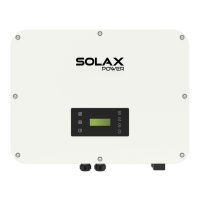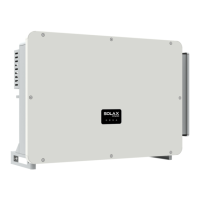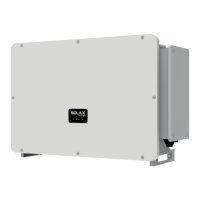135
15 Appendix
15.1 Generator Application
Introduction of generator application
In certain regions where utility power is unstable, the use of generators becomes necessary
to ensure uninterrupted operation of loads. The characteristic of this system is its ability to
seamlessly switch to generators combined with an energy storage system, forming a new
power supply configuration in the absence of utility power.
A diesel generator is employed to replicate grid-like functionality, while a hybrid inverter
converts solar energy into usable electric energy.
Notice for generator application
• Note 1: The generator should be equipped with an ATS, enabling it to start
automatically in the event of a power outage.
• Note 2: The rated output power of the generator should be greater than the sum
of the load power and the battery charging power. If there are two inverters in
parallel, the rated output power of the generator should be greater than the sum
of the load power and the battery charging power of the two inverters.
• Note 3: If the rated output power of the generator is small and cannot meet the
requirements of Note 2, the setting value of MaxChargePower can be changed
in the Menu>Setting>Advance Setting>ExternalGen to ensure that the generator
power can meet the load and battery charging use at the same time.
• Note 4: The EPS load power cannot be greater than the battery discharge power
to prevent the battery power from being unable to meet the EPS load after the
generator shuts down and the inverter will report Overload fault. If two inverters
are paralleled, the EPS load power shall be doubled.
ATS control mode
In this operating mode, the generator functions as a substitute for the grid. There is
no communication between the generator and the inverter, which means no wiring
modifications are required (however, the inverter is also unable to control the generator).
The ATS that accompanies the generator will determine whether the generator should be
turned on or off based on the status of the grid.

